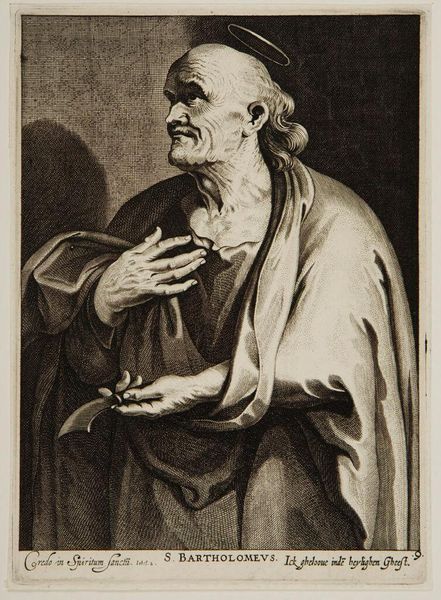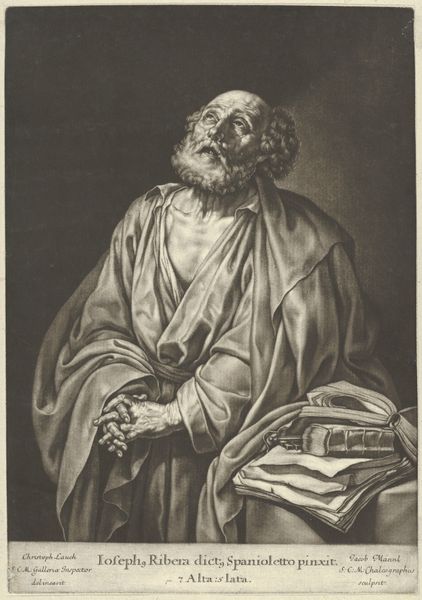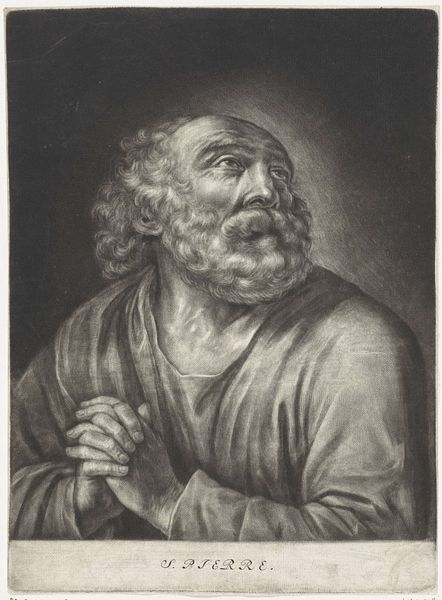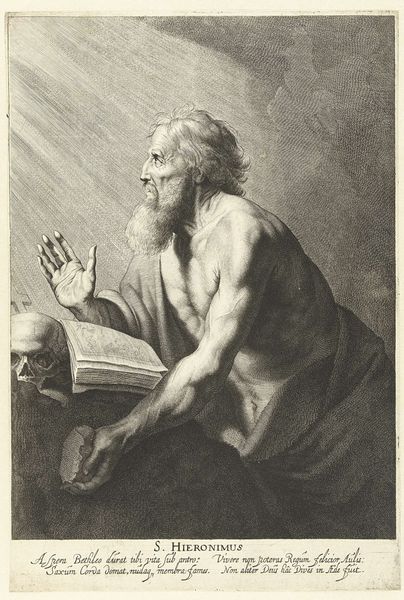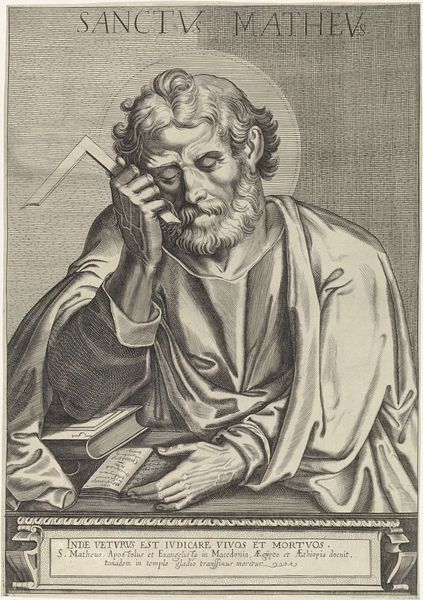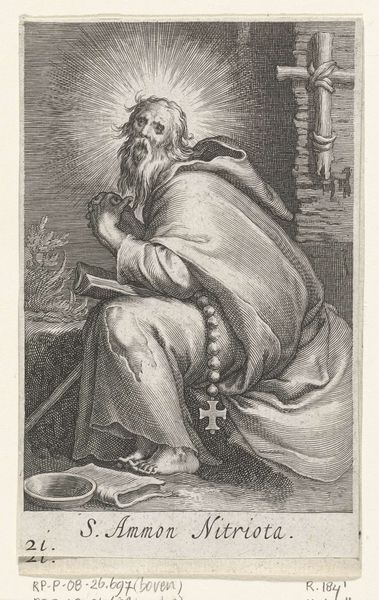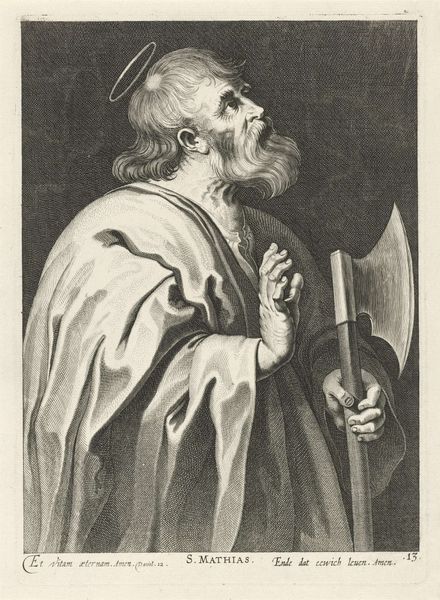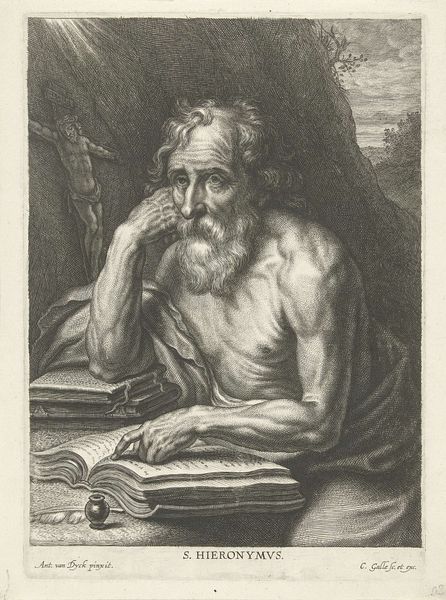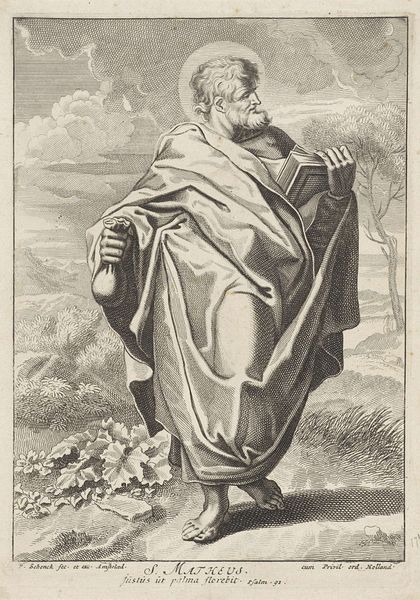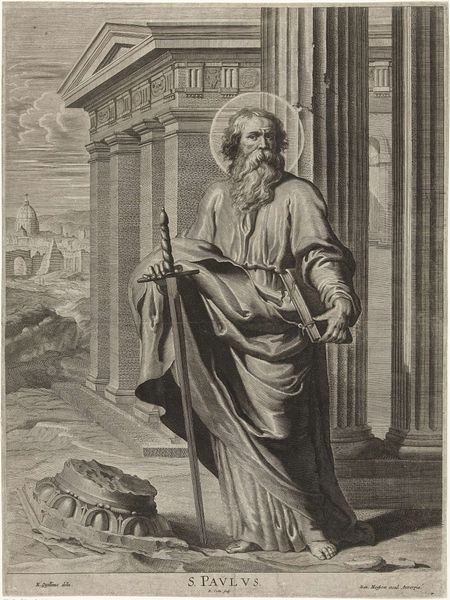
engraving
#
portrait
#
baroque
#
figuration
#
line
#
history-painting
#
engraving
Dimensions: height 143 mm, width 200 mm
Copyright: Rijks Museum: Open Domain
This is Nicolaes Ryckmans’s “Apostle Bartholomew”, an engraving made in the Netherlands in the 17th century. Ryckmans was working at a time when the Dutch Republic was solidifying its identity through the Protestant Reformation and its revolt against the Spanish Empire. Biblical imagery became a powerful tool to express their new cultural and political values. Bartholomew holds a knife, a visual code referencing his martyrdom by flaying. Instead of glorifying suffering, Ryckmans presents Bartholomew as an ordinary man marked by time, his humanity emphasized through the details of his aged face and hands. This portrayal reflects the Protestant emphasis on personal faith and the accessibility of saints as relatable figures. Studying such an image demands an understanding of religious history, the dynamics of the Reformation, and the role of art in shaping cultural identity. It reminds us that the meaning of art is not fixed but evolves within specific social and institutional contexts.
Comments
No comments
Be the first to comment and join the conversation on the ultimate creative platform.
